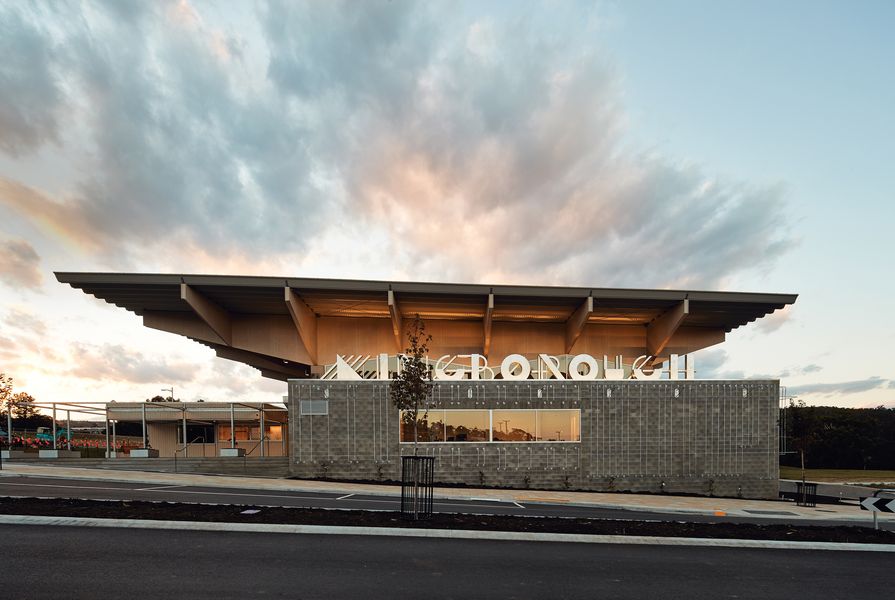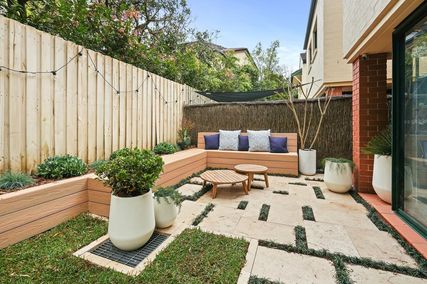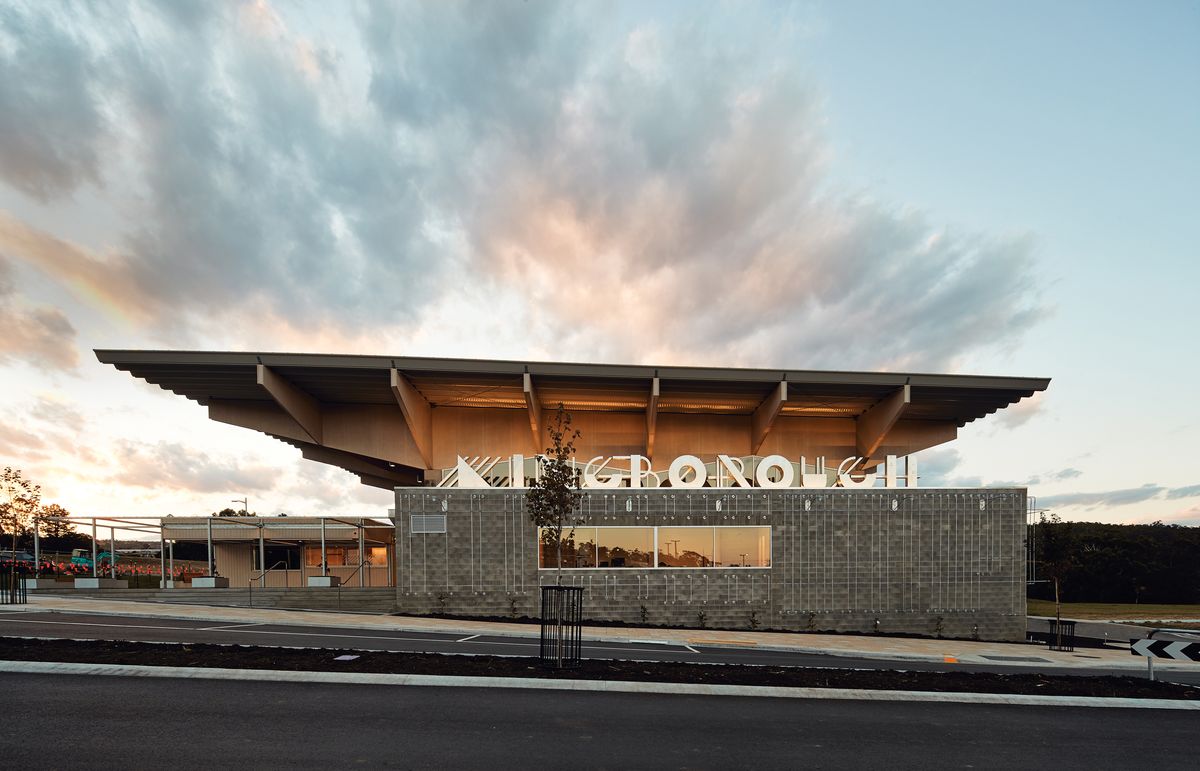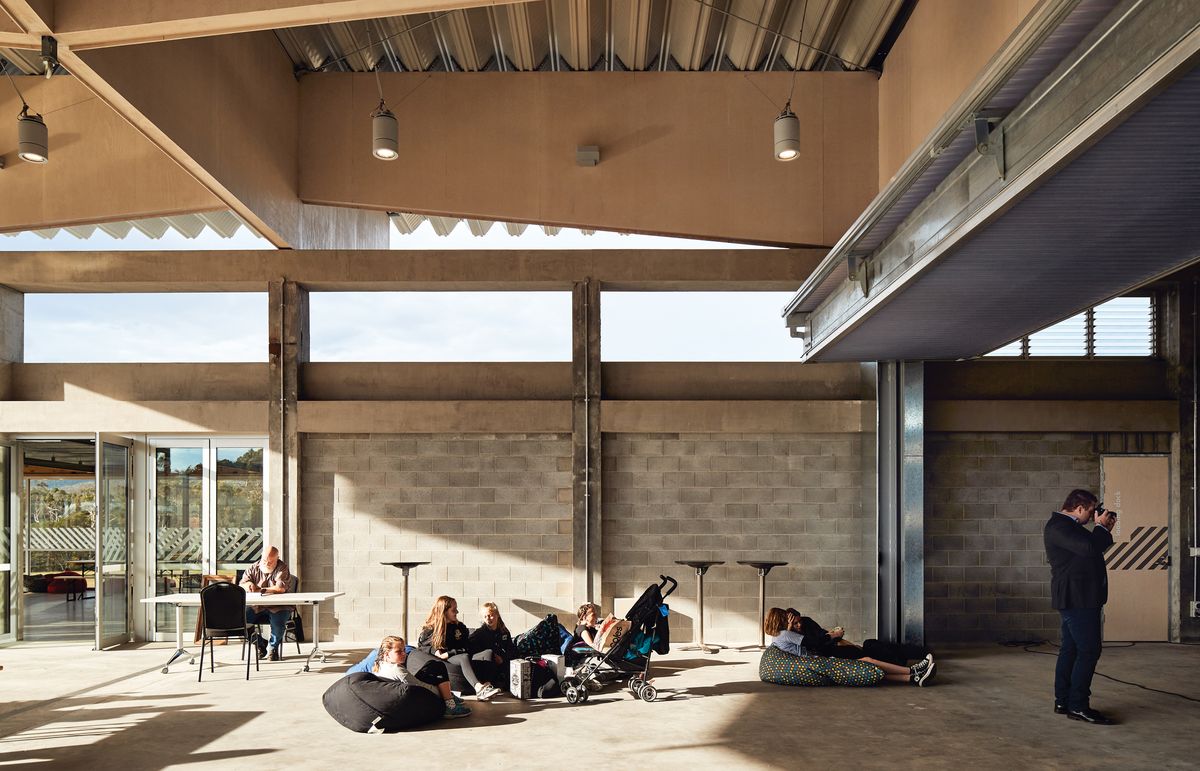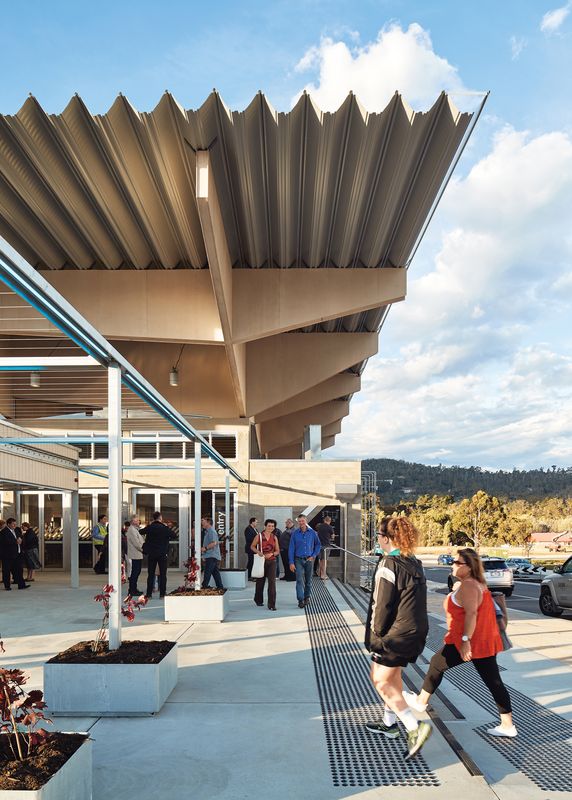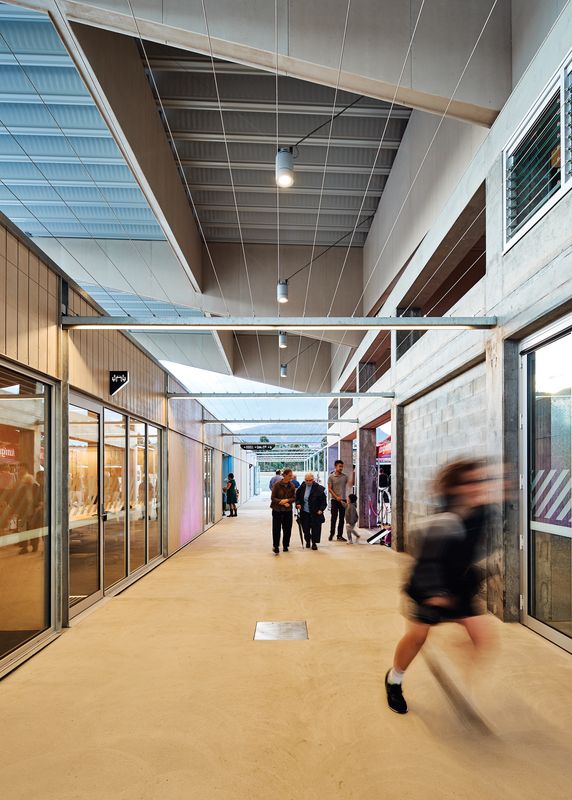Sometime in the 1990s, the cyber-prophet William Gibson proclaimed, “The future is already here – it’s just not very evenly distributed.” Gibson’s pithy maxim is about the uptake of technology and the global disparities created by wealth and location. There is something about Tasmania, and in particular Hobart, that speaks to Gibson’s trope. In Tasmania, an exciting future that has already arrived presses up close with an incontrovertible socioeconomic unevenness.
Tasmania’s radical and optimistic future is broadcast through its world-famous culture and ecology – from the bravado of annual events like Dark Mofo to pristine World Heritage-listed landscapes. In parallel, there is a cautionary tale about a future that is defined by socioeconomic disparity. The average wage in Tasmania is the lowest in Australia. In Hobart, more than half of low-income households have no affordable housing options and youth unemployment is the highest of any Australian capital city. Tasmania presents as a special case study in the urgent task of creating a more evenly distributed future. The world needs more buildings that directly address this challenge – more architecture that creates opportunity for all and builds resilient communities. The Kingborough Community Hub by March Studio is an exemplar of both, describing architecture’s capacity (and responsibility) to even things up.
Tasmania’s profound and difficult duality has a tangible impact on architectural production and achievement. There are the projects that support the state’s burgeoning culture and tourism, from Fender Katsalidis’s ground-breaking Museum of Old and New Art (MONA), to more recent works, including the Brooke Street Pier by Circa Morris-Nunn Architects, and Partners Hill’s projects for the Detached Cultural Organisation in the Old Mercury Building. Alongside these noted works are the grassroots projects that directly address community and opportunity – including Room 11’s work for the Glenorchy Art and Sculpture Park (GASP), Lady Gowrie Tasmania Integrated Child and Family Centre by Cumulus Studio and the Sustainability Learning Centre by Morrison and Breytenbach Architects. The Kingborough Community Hub in the town of Kingston, 12 kilometres south of Hobart, is something of a mash-up of these two project types, operating as both a cultural container and a community incubator.
The architects envisioned a variety of intertwined conditions and spaces: inside and outside, high and low, open and closed.
Image: Peter Bennetts
The Kingborough Community Hub is built on the land of the Mouheneenner people within the prospect of kunanyi (once known as Mount Wellington). Melbourne-based March Studio won the commission in 2016 through an invited competition organized by the Kingborough Council, in conjunction with the Australian Institute of Architects, and supported by a grant from the federal government through the Building Better Regions Fund. The mixed greenfield and brownfield site, which is on the north-western fringe of Kingston’s central business district, was previously the Kingston High School campus. The completion of the Kingborough Community Hub is just the first step in the ambitious council-led redevelopment of the 11-hectare site now known as Kingston Park. The community-responsive Kingston Park Open Space Master Plan prepared by Playstreet, a Hobart-based landscape architecture studio, includes community facilities, privately developed housing and commercial buildings, and a large parkland (which is due to open in 2020). The rhetoric around the redevelopment in the local press is all “jobs and growth.” There is a lot at stake for the community and its council, with Kingston Park pitched as a project essential to the socioeconomic future of the fast-growing municipality.
The functional requirements of the Community Hub are unremarkable for a building of its typology – a multipurpose community hall, meeting rooms, flexible workspace, town square, public amenities, cafe and storage. Early uses include a Diwali celebration with film screening, the council’s Salvaged art show and community forums, including a packed meeting to discuss the Tasmanian Government’s planned “fast-track” rezoning at nearby Huntingfield. In the design process, March Studio built up their own functional narrative, role-playing the way an urban square and community facility might attract and serve in the urban fringe. The planning emphasizes flexibility and permeability – the big-box, indoor–outdoor town square (within the structure of the 1970s high school gymnasium) opens up on two sides and sits alongside a colonnaded annexe of discrete rooms. Designed to be a gateway between Kingston’s urban and natural realms, the building demonstrates a big leap of faith in the way it addresses itself – it is on the edge of the existing town but, in time, it will be at the centre. For now, we must imagine the northern forecourt folding out to the life of the green recreation space and grand views to kunanyi and the street edge, with its energetic scaled-up signage and generous arrival stair, as the very public contribution to a mixed-use commercial streetscape.
With its generous entry and views of kunanyi, the centre is conceived to be a gateway between Kingston’s urban and natural realms.
Image: Peter Bennetts
The roof is the reluctant, albeit charismatic, hero of the building – form is just one aspect of the project’s design agenda. In March Studio’s approach, resilience, tradition and setting are equal participants. The reuse of the fabric of the high school gymnasium, the deployment of local construction and engineering ingenuity and the opportunities released by carefully addressing the setting (built and anticipated) all shape the outcome. And yet, there it is – a grand, cantilevering, 40-square-metre parasol structure. It is civic in scale, providing a powerful marker in the landscape. The plywood-clad crate of trusses and deep structural roof sheeting have a rudimentary tectonic that belies the design precision. This roof has potent architectural associations outside of the immediate context. The most striking antecedent is Melbourne’s Olympic Swimming and Diving Stadium, designed by architects Kevin Borland, Peter McIntyre, John and Phyllis Murphy and engineer Bill Irwin. Completed in 1956, this structuralist landmark has an innovative trussed roof that is heavy in silhouette but floating in section, a quality shared by the Kingborough Community Hub’s canopy roof. Investigations of the roof are not new to March Studio – it is an element used to great effect in recent residential projects, including Mullet House in Melbourne’s inner-city suburb of Kensington and Somers House on Victoria’s Mornington Peninsula.
March Studio refers to the Kingborough Community Hub as the practice’s first public project, but it might be more instructive to describe the building as the studio’s first public commission. This multidisciplinary architecture practice is best known for its award-winning retail and hospitality environments – including a clutch of Aesop stores in Australia and across the globe and the wildly Instagram-able Hotel Hotel in Canberra, with its grand urban-scaled lobby. At Kingborough, the practice has brought the engagement and atmosphere called for in client briefs for shops, hotels, bars and restaurants to the development of community infrastructure. The Kingborough Community Hub confidently addresses the present and the future. It responds to the day-to-day needs and activities of the Kingston community and creates a rallying point for more evenly distributed development and growth in Tasmania.
Kingborough Community Hub is built on the land of the Muwinina and Nununi peoples.
Credits
- Project
- Kingborough Community Hub
- Architect
- March Studio
Melbourne, Vic, Australia
- Project Team
- Eggleston, Garth Ancher, Nicola Pacella, Joyce Kwong, Charlie Lane, Toby McElwaine, Jenny Kan, Jaime Levin, Julian Canterbury, Anne-Laure Cavigneaux
- Consultants
-
Builder
Hutchinson Builders
Building surveyor Lee Tyers Building Surveyors
Electrical engineer Ecos
Fire engineer Dobbs Doherty
Mechanical engineer Ian Loney Mechanical Consultant
Structural and hydraulic engineers Aldanmark
Sustainability consultant Red Sustainability Consultants
- Site Details
-
Site type
Suburban
- Project Details
-
Status
Built
Completion date 2019
Category Public / cultural
Type Community centres
Source

Project
Published online: 19 May 2020
Words:
Cameron Bruhn
Images:
Peter Bennetts
Issue
Architecture Australia, March 2020

